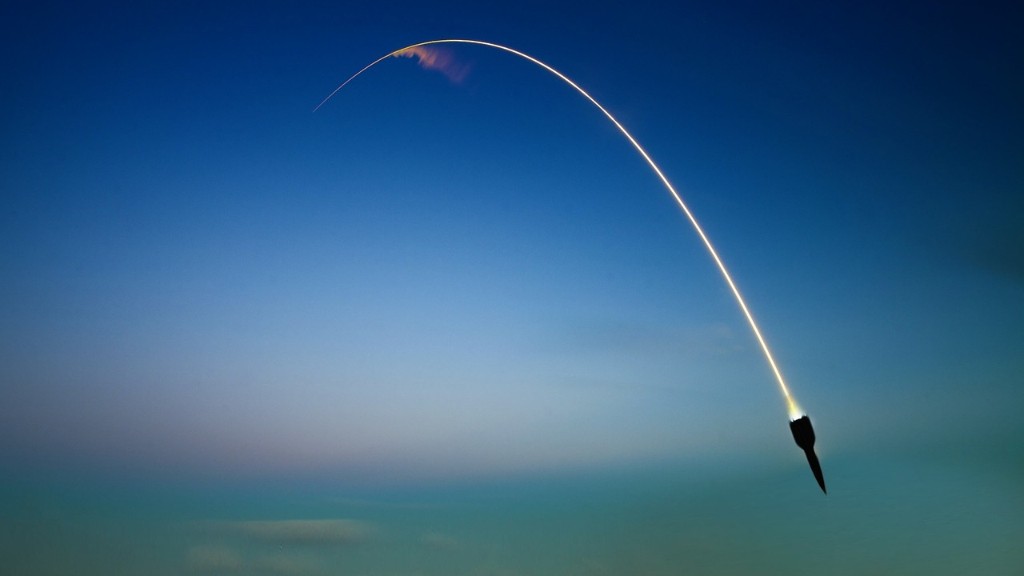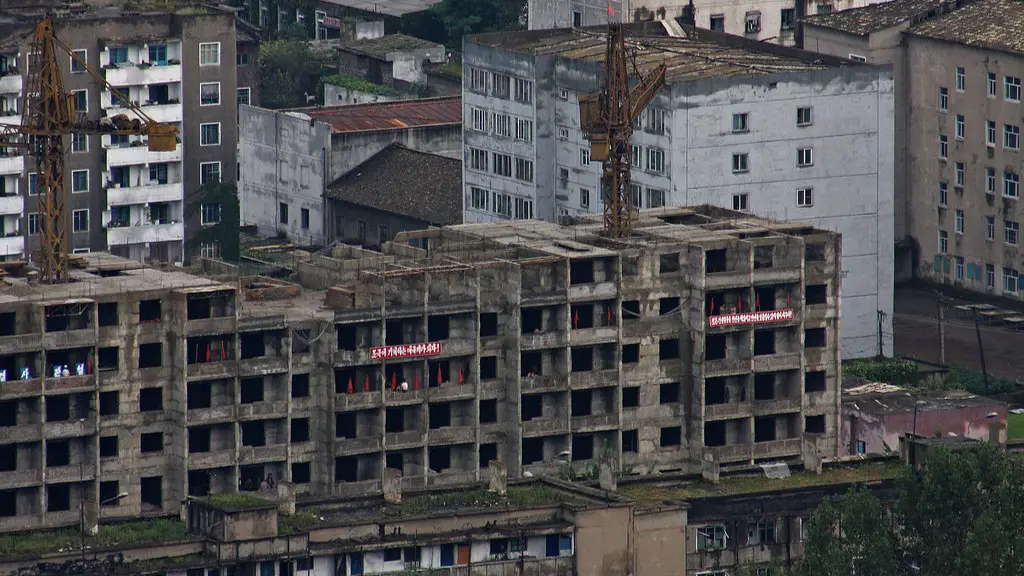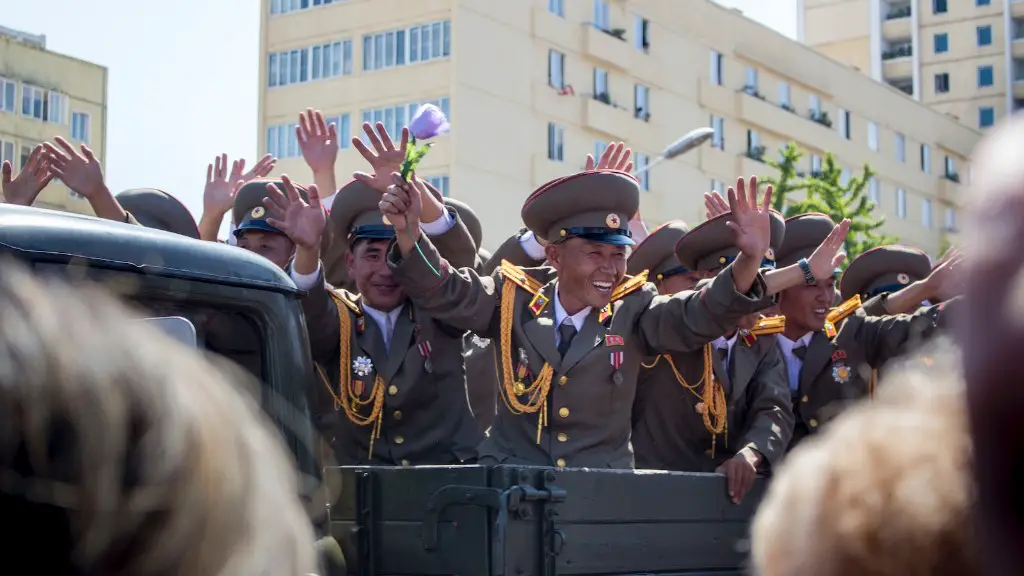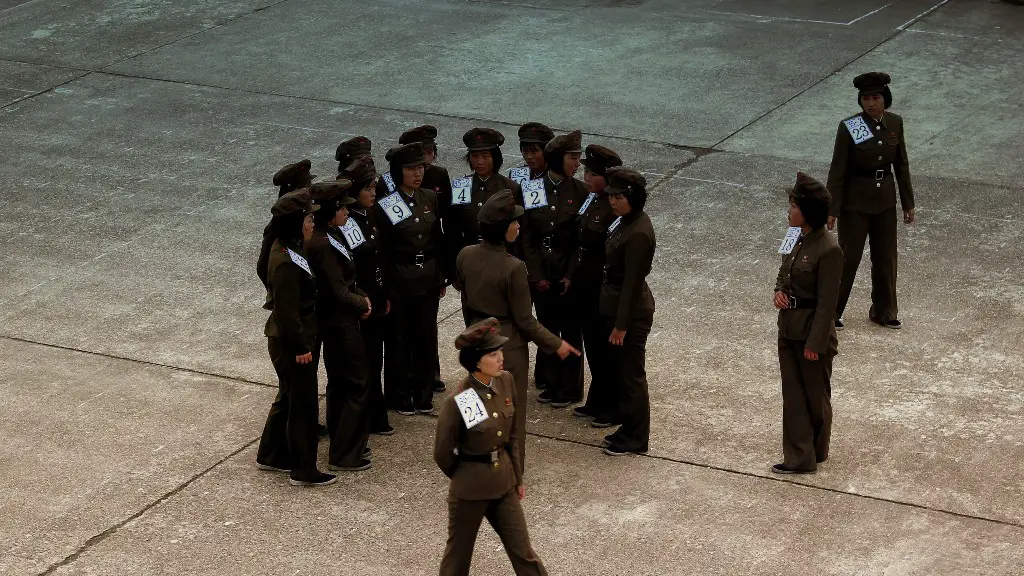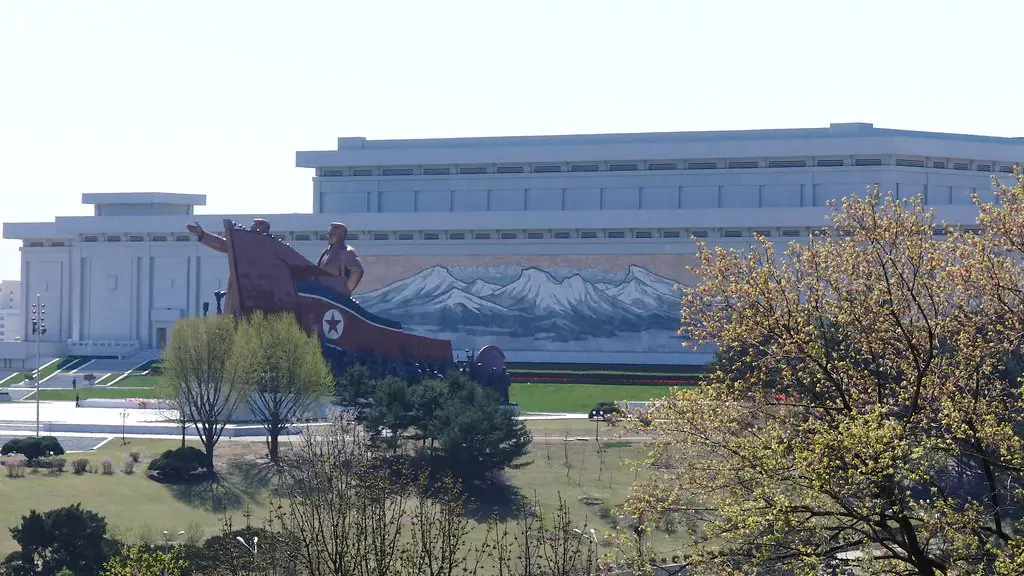Since the Korean War, South and North Korea have been separated by the Demilitarized Zone (DMZ), a buffer zone that runs along the 38th parallel. The DMZ is 4km wide and 160km long, and is the most heavily militarized border in the world.Over the past few decades, there have been a number of initiatives to try to improve relations between the two countries. In 2000, South Korean President Kim Dae-jung visited Pyongyang, and in 2007 North Korean leader Kim Jong-Il made a rare visit to Seoul. However, relations between the two countries have been strained since the 2010 sinking of the South Korean ship the Cheonan, which killed 46 sailors. North Korea deny any involvement in the incident, but South Korea insists that they were behind it.
The two Koreas were divided in 1945, at the end of World War II. The country was split into a communist North, governed by the Soviet Union, and a capitalist South, governed by the United States. The division was meant to be temporary, but the two Koreas soon became locked in a Cold War rivalry. In 1950, North Korea invaded the South, sparking a three-year war that ended in an uneasy truce. The two Koreas have been adversaries ever since.
When did Korea split into North and South?
The Korean War Armistice Agreement was signed on July 27, 1953, by representatives of North Korea, China, and the United Nations Command. The armistice put an end to open combat operations in the Korean War, which had begun three years earlier.
Under the terms of the armistice, a Demilitarized Zone (DMZ) was established along the 38th parallel, and a Joint Commission for the Reunification of Korea was created to oversee the eventual reunification of the Korean Peninsula. Although the armistice ended the fighting, it did not bring an end to the Korean War, which technically continues to this day.
Since the US policy toward Korea during World War II was to prevent any single power from dominating Korea, it may be reasonably concluded that the primary reason for the division of the country was to halt the Soviet advance south of the 38th parallel.
Can South Koreans go to North Korea
If you are attempting to enter North Korea from South Korea, or vice versa, you will be arrested and detained. Even if you meet all entry requirements, North Korea and South Korea do not allow entry from the other country.
The North-South Joint Communiqué was issued on July 4, 1972, following a three-day summit between North Korean leader Kim Il-sung and South Korean president Park Chung-hee. The communiqué outlined the principles of unification that both sides agreed to, including the idea that unification should be achieved through independent Korean efforts without outside interference, and that it should be achieved through peaceful means, not through force.
Why did America join the Korean War?
This event occurred during the Cold War when the US and Soviet Union were vying for power. The US was determined to stop the spread of communism, and this event was a way to show their allies that they would come to their aid. Kim says that the Democrats needed to look tough on communism in order to gain support from the public.
The Chosŏn dynasty was a Korean dynasty that ruled the Korean peninsula from 1392 to 1910. The dynasty was founded by Yi Seong-gye, who led a revolt against the ruling Goryeo dynasty. Chosŏn is the Korean word for “land of the morning calm.” The dynasty was characterized by a strong centralization of power and a isolationist foreign policy.
Why can’t South Koreans go to North Korea?
South Korea and North Korea are two countries that are very much divided. There is a lot of tension between the two countries, and the law in South Korea reflects that. South Koreans are not allowed to communicate with people in North Korea, and they cannot travel there. This is because the South Korean government wants to prevent any kind of contact that could potentially lead to more conflict. For Kim, this means that she has little chance of seeing her family again unless there is a major change in the relationship between the two Koreas.
The Korean Demilitarized Zone (DMZ) is a buffer zone that runs across the Korean peninsula, splitting North and South Korea. It is 4km wide (2km in each Korea) and was created to help prevent conflict between the two countries. Outside of extraordinary circumstances (typically diplomatic), nobody is permitted to cross the DMZ.
Can a North Korean leave his country
North Korea heavily restricts the freedom of movement for its citizens. North Koreans usually cannot freely travel around the country, let alone travel abroad. Emigration and immigration are strictly controlled by the government.
With the recent tensions between the US and North Korea, the US has now banned its citizens from traveling to North Korea. This is for the safety of Americans as North Korea is now considered a very dangerous country.
What things are illegal in North Korea?
When traveling to North Korea, it is important to be aware of the strict laws regarding what you can bring into the country. It is illegal to bring in religious, pornographic or political items, and all published material and electronic devices must be declared upon arrival. Additionally, it is illegal to knowingly or unknowingly possess items that breach North Korean law. If you are found to be in possession of such items, you could face harsh penalties. Therefore, it is important to be familiar with the laws before traveling to North Korea.
If you are considering traveling to North Korea, you should exercise increased caution due to the critical threat of wrongful detention. All US passports are invalid for travel to, in, or through the DPRK unless specially validated for such travel under the authority of the Secretary of State. Special validations are granted only in very limited circumstances.
Are North and South Korea still friends
The Korean peninsula was occupied by the Japanese from 1910 until the end of World War II in 1945. At that time, the peninsula was divided into two occupation zones, with the Soviets in control of the north and the Americans in the south.
Both the Soviet Union and the United States supported separate governments – the North Korean Communist Party and the South Korean anti-communist party, respectively. In 1948, these two governments declared themselves independent nations, North and South Korea.
The Korean War began in 1950 when North Korean troops invaded the south, and ended in 1953 with an armistice. North and South Korea remain technically at war, as a peace treaty was never signed.
In the decades since the war, North Korea has been a reclusive, dictatorship nation, while South Korea has become a thriving democracy and economy. The two countries remain divided, and tensions between them occasionally flare up.
North Korea is not recognized by 7 UN member states: Botswana, Estonia, France, Israel, Japan, South Korea, and the United States; one UN observer: Vatican City; as well as one non-UN member: Taiwan.
What countries allow North Koreans?
North Korean passport holders can now travel visa-free to 10 countries and territories as of January 2023. This includes Belarus, Cook Islands, Dominica, Guyana, Haiti, Kyrgyzstan, Micronesia, Niue, and more. This is great news for North Koreans who wish to travel internationally.
The domino effect refers to the idea that if one country falls to communism, then the surrounding countries will also fall like dominoes. This was a major concern for America during the Cold War, as they did not want to see the spread of communism. Not only did America want to contain communism, but they also wanted to prevent it from spreading. Truman was especially worried that if Korea fell to communism, then Japan would be the next country to fall. This was a major concern because Japan was a very important trading partner for America. In the end, America’s involvement in the Korean War was likely driven by their desire to prevent the domino effect and to contain communism.
Did the US bomb China during the Korean War
The report cited extensive on-site evidence, photographs, lab tests and witness statements, including those from captured US airmen, to conclude that the people of China and the DPRK were targeted by US biological weapons during the Korean War. This is a serious accusation, and if true, it would be a war crime. The US government has denied these accusations, but the evidence in the report is hard to ignore.
The US government’s recent focus on the Asia-Pacific region has led to an increased military presence in the region, including in South Korea. With 28,500 troops stationed in the country, US forces are a major presence in South Korea and a key element of the government’s rebalancing efforts. The troops provide a vital deterrent to North Korean aggression and help to ensure regional stability.
Warp Up
The Korean War began on June 25, 1950, when North Korean forces invaded the South. The United Nations, with the United States as the main contributor, came to South Korea’s aid. The war ended in 1953 with an armistice that left the peninsula divided.
The separation of North and South Korea is a tragic story of two countries that were once one, but were forced to divide due to the politics of the Cold War. Despite the separation, the two countries share a rich history and culture that has been passed down through generations. Although the relationship between North and South Korea is strained, there is still hope for a reunion between the two countries.
